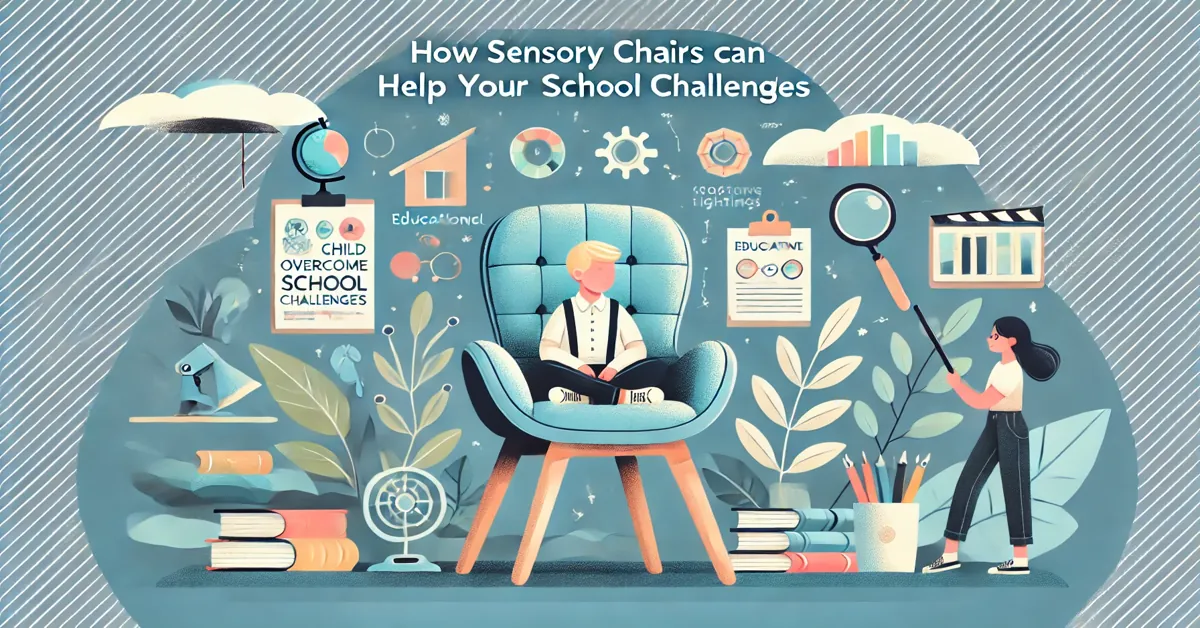Introduction
Imagine this: your child comes home from school every day, frustrated and exhausted. They struggle to focus in class, often fidgeting and feeling uncomfortable in their seat. Homework time becomes a battle, and their grades are starting to reflect these challenges. If this sounds familiar, you’re not alone. Many parents face similar struggles with their children. But what if there were a straightforward solution that could make a difference? Enter sensory chairs.
Understanding School Challenges
1.Academic Challenges
Children face a myriad of challenges in school, and academic struggles are often at the forefront. Many kids find it difficult to focus on tasks, stay organized, and complete assignments on time. This can lead to falling behind in class and feeling overwhelmed.
2.Behavioral Challenges
Behavioral issues such as fidgeting, restlessness, and disruptive actions are common, especially in children with conditions like ADHD. These behaviors can be distracting not only for the child but also for their classmates and teachers.
3.Emotional Challenges
Anxiety, stress, and low self-esteem can significantly impact a child’s performance in school. The pressure to perform well and fit in can be overwhelming, leading to emotional distress that further hinders academic and social success.
How Sensory Chairs Can Help Tackle School Challenges
1.Improved Focus and Attention
One of the primary benefits of sensory chairs is their ability to help children concentrate. The movement and sensory input they provide can reduce the need for fidgeting, allowing kids to focus better on their tasks. For instance, a wobble chair can keep a child engaged and attentive during long lessons.
2.Enhanced Comfort and Reduced Anxiety
Sensory chairs can create a comfortable and secure environment, which is crucial for reducing anxiety. The familiar motion of a rocking chair or the reassuring weight of a lap desk can help children feel more at ease, leading to a better learning experience.
3.Better Posture and Physical Health
Traditional classroom chairs can be uncomfortable and lead to poor posture. Sensory chairs like ball chairs encourage active sitting, which can improve core strength and overall physical health. Good posture is not only beneficial for physical well-being but also for cognitive function.
4.Increased Participation and Engagement
When children are comfortable and focused, they’re more likely to participate in class activities. Sensory chairs can make learning more interactive and enjoyable, fostering a positive attitude towards schoolwork.
Sensory Chairs for Different Needs
1.Children with ADH
For children with ADHD, managing hyperactivity and impulsivity can be a significant challenge. Sensory chairs can be incredibly beneficial in this regard. The movement allowed by wobble chairs or ball chairs can help channel excess energy in a constructive way, improving focus and reducing disruptive behaviors.
2.Children with Autism
Children with autism often experience sensory overload and have difficulty with self-regulation. Sensory chairs like rocking chairs or weighted lap desks can provide the stability and sensory input they need to feel calm and secure. This can make a world of difference in their ability to engage in classroom activities.
3.General Classroom Use
While sensory chairs are particularly beneficial for children with specific needs, they can be advantageous for all students. Creating a classroom environment that caters to various sensory preferences can enhance overall learning and reduce stress for everyone.
Integrating Sensory Chairs into Daily Routine
1.At Home
Incorporating sensory chairs at home can make homework and study sessions more productive. Set up a designated study area with a sensory chair that suits your child’s needs. Encourage them to use the chair during reading, writing, or any other focused activities.
2.In School
Discussing sensory chairs with your child’s teachers and school administrators can lead to their use in the classroom. Many schools are open to accommodating students’ sensory needs, and teachers may find that sensory chairs benefit the entire class.
3.During Leisure Activities
Sensory chairs can also be used during leisure activities to reinforce positive experiences. For example, a rocking chair can be a great addition to a reading nook, providing a calming space for your child to relax and enjoy their favorite books.
Additional Strategies
Incorporating activities like yoga, stretching, and sensory play into your child’s daily routine can further support their sensory processing. These activities can help improve body awareness, reduce anxiety, and provide a fun way to engage with sensory input.
Conclusion
Sensory chairs can be a game-changer for children facing school challenges. Whether your child has specific sensory needs or could benefit from a more comfortable and engaging learning environment, sensory chairs are worth considering.









